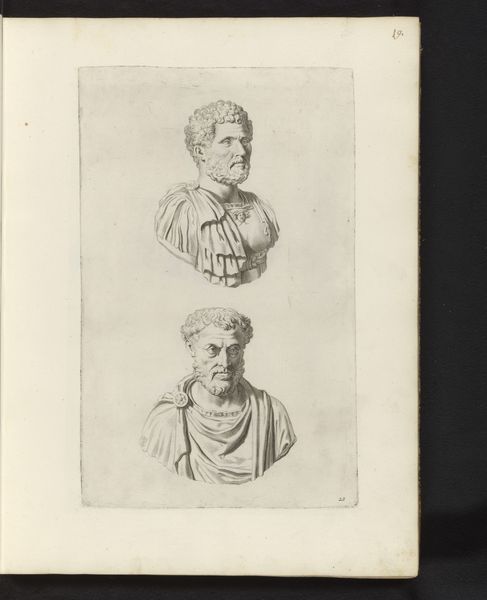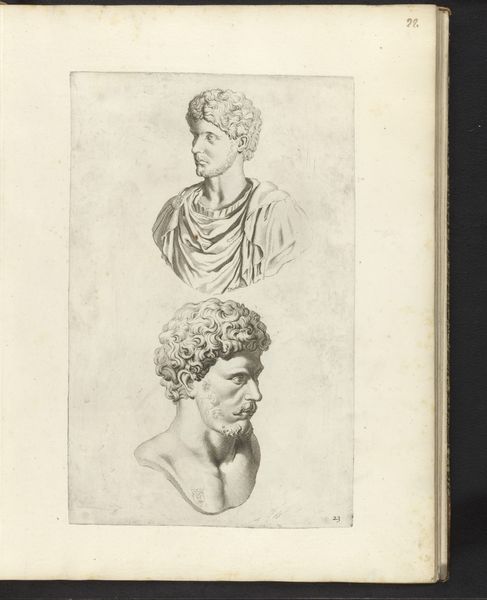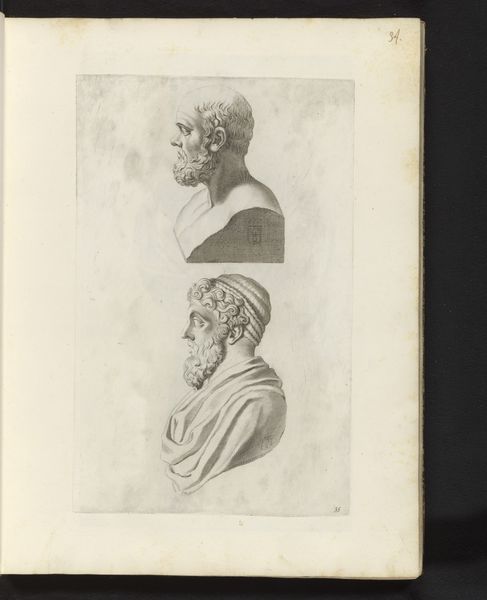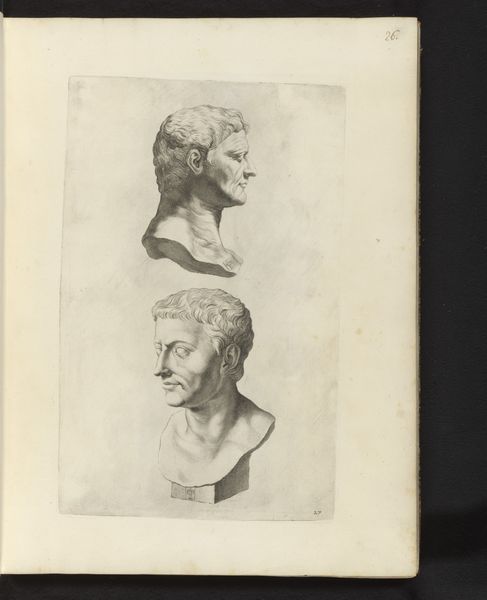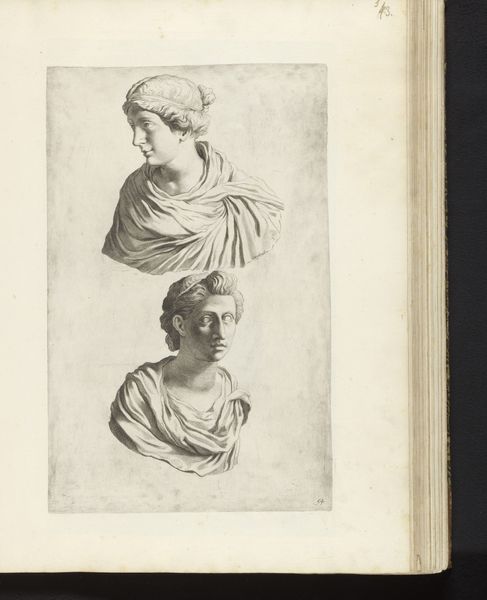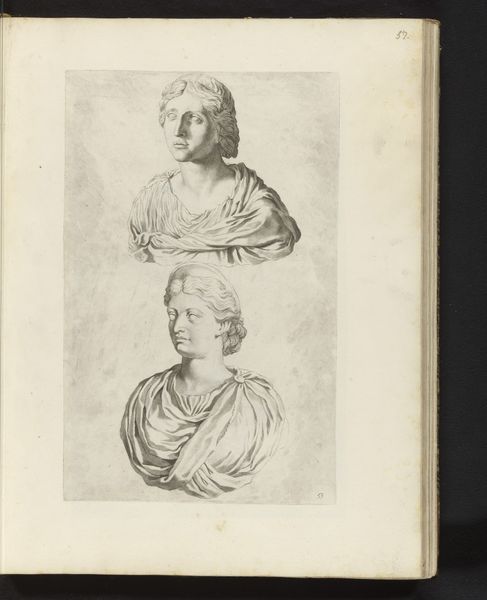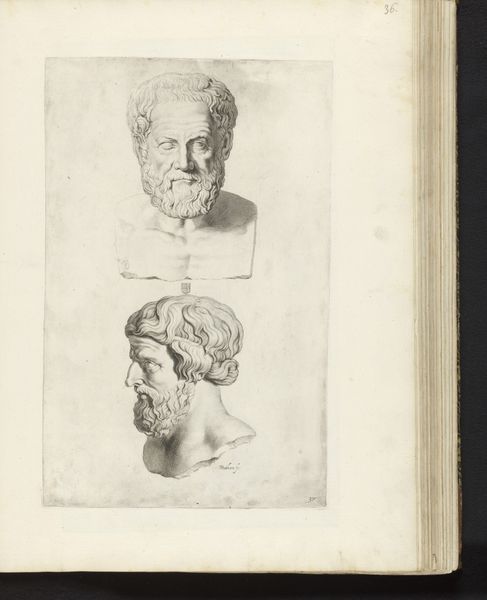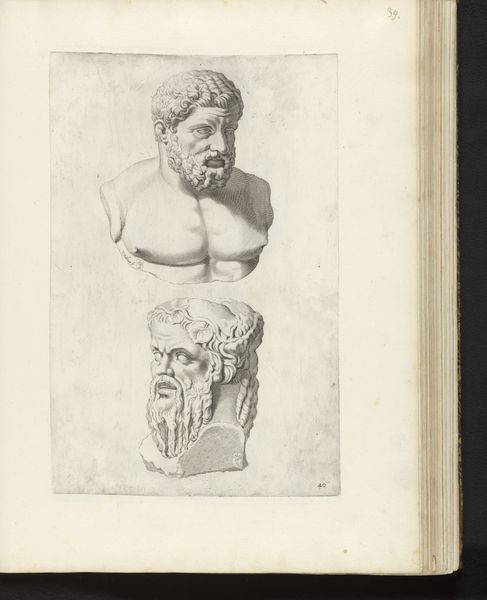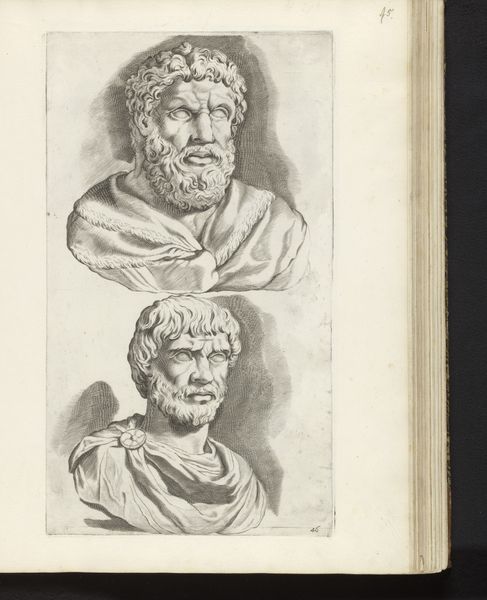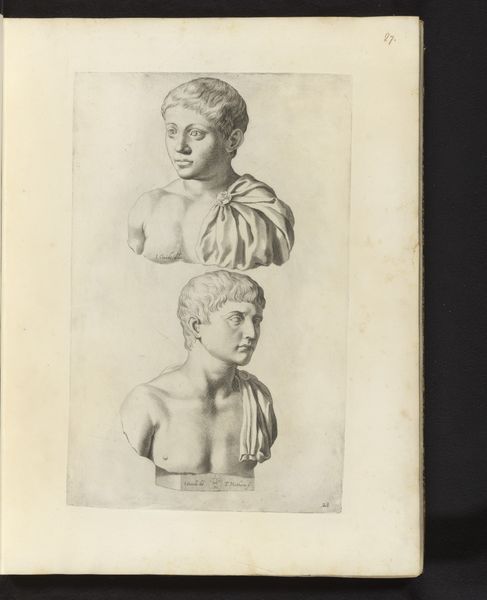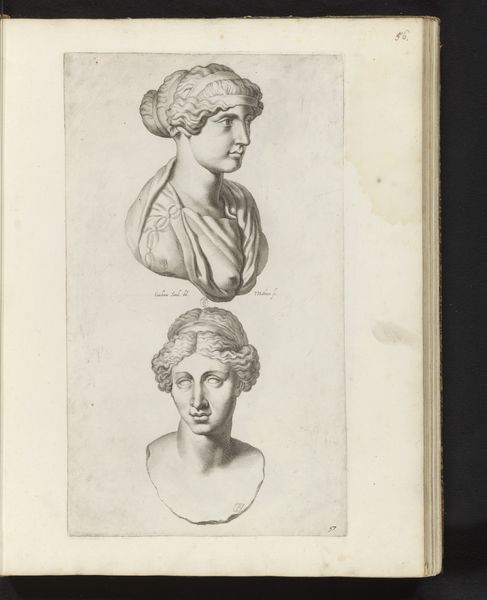
drawing, ink
#
portrait
#
pencil drawn
#
drawing
#
classical-realism
#
ink
#
pencil drawing
#
ancient-mediterranean
#
portrait drawing
#
history-painting
#
statue
Dimensions: height 374 mm, width 233 mm
Copyright: Rijks Museum: Open Domain
Editor: This drawing by Theodor Matham, created between 1636 and 1647, features busts of Lucius Junius Brutus and Marcus Junius Brutus. The figures are rendered in ink, with incredible detail. What strikes me is how stoic they both appear, almost confrontational. How do you interpret this work? Curator: What I find fascinating is how Matham uses the classical busts of these two figures to subtly engage with notions of tyranny and liberty relevant to his own time. Brutus, of course, is famous for his role in the assassination of Julius Caesar. Think about it: depicting these figures during a time of monarchical rule in Europe could be seen as a powerful, albeit subtle, commentary. What do these historical figures represent when seen through the lens of 17th century politics? Editor: That's a very interesting point. So, it’s not just a historical depiction, but also perhaps a statement on power dynamics of Matham's own era? Were such critiques common in art then? Curator: Precisely! The drawing encourages us to reflect on themes of freedom and authority and connect the Ancient world with contemporary socio-political discourse. While overt criticisms could be risky, artists often used historical or mythological subjects to address contemporary issues. Matham subtly infuses these busts with revolutionary undertones. Do you think these concepts would still be present if these were sculptures? Editor: That makes me think about how the medium of drawing contributes to the message itself, perhaps as a more easily disseminated or even subversive form compared to sculpture. It allows for reproduction and wider distribution of these ideals. It feels like it could have been meant to ignite conversations. Curator: Exactly! The act of drawing, the creation of copies, becomes part of the revolutionary potential. I agree, there’s an intentionality behind the medium, reinforcing the theme. Editor: I hadn’t considered the drawing as a potential political act in itself, rather than simply a representation. I’ll definitely look at historical portraiture differently from now on!
Comments
No comments
Be the first to comment and join the conversation on the ultimate creative platform.
